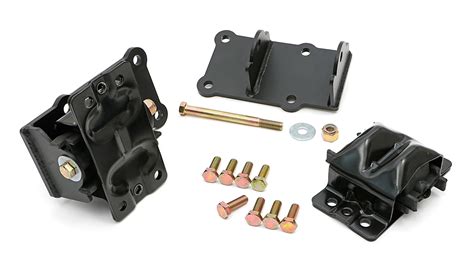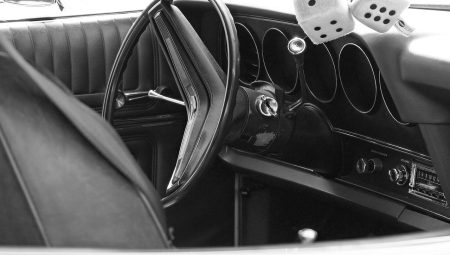Explore the G Body Chassis and learn about engine mounts, common issues, performance upgrades, and their impact on vehicle performance.When it comes to car performance, the often-overlooked components can make all the difference—especially in the G Body chassis. These classic vehicles, popular for their versatility and potential, rely on sturdy engine mounts to maintain stability and ensure optimal driving experience. Engine mounts play a crucial role in securing your engine, minimizing vibration, and providing essential alignment. Unfortunately, stock mounts can fall prey to wear and tear, leading to common issues that impact performance. In this blog post, we’ll delve into the fundamentals of the G Body chassis and engine mounts, uncover the problems associated with stock mounts, and highlight the benefits of upgrading to performance mounts. Join us as we explore how these upgrades can enhance your vehicle’s performance and longevity, ensuring an exhilarating ride every time you hit the road.
Understanding the G Body Chassis
The G Body chassis, a platform used predominantly in General Motors vehicles from the late 1970s through the early 1980s, is renowned for its versatility and solid construction, which allows for various modifications and enhancements, particularly when it comes to housing powerful LS engine swaps. With distinct design elements that cater to performance enthusiasts, the G Body has garnered a cult following that appreciates its ability to support a range of aftermarket upgrades, enabling builders to achieve impressive horsepower and torque outputs.
One of the key advantages of the G Body chassis is its relatively lightweight structure, which provides a favorable power-to-weight ratio, enhancing both acceleration and handling dynamics, making it an ideal candidate for enthusiasts looking to retrofit modern engine technology, such as the LS series engines, known for their robust performance and reliability. Additionally, the G Body’s suspension geometry lends itself to improved traction and cornering capabilities, offering a foundation upon which a variety of performance modifications can be successfully executed.
Moreover, when considering an LS engine swap, the compatibility of the motor mounts with the existing chassis system is pivotal for maintaining the integrity of the vehicle while achieving optimal performance; this consideration highlights the necessity of understanding not just the mechanics of the G Body chassis but also the extensive implications that come with modifications, especially in terms of ensuring that the engineering elements work harmoniously
The Importance of Engine Mounts
When it comes to the intricate world of automotive engineering and performance, engine mounts play a critical role that is often overlooked, yet their importance cannot be emphasized enough; they serve as the vital link between the engine and the vehicle’s chassis, absorbing vibrations, minimizing movement, and maintaining alignment under various driving conditions.
By utilizing engine mounts, drivers can experience a smoother ride while ensuring that power generated by the engine is transmitted efficiently to the wheels, thus optimizing the overall performance of the vehicle, which is especially crucial for those considering a swap to a G Body LS engine, where the compatibility and stability of mounts directly affect how well the engine performs.
Moreover, while stock mounts may suffice for everyday driving, upgrading to high-performance engine mounts can provide greater stability and reduce the likelihood of issues such as excessive engine movement, which not only compromises handling but can also lead to increased wear on other components of the vehicle; therefore, choosing the right engine mounts is pivotal in achieving both safety and enhanced driving experience for any automotive enthusiast.
Common Issues with Stock Mounts
When it comes to the G Body LS engine mounts, there are numerous challenges associated with the stock mounts that can affect both performance and safety. These stock engine mounts are often made from rubber or a similar material that, while effective under normal conditions, can deteriorate over time due to exposure to heat, oil, and other contaminants, leading to a phenomenon known as loss of stiffness which can result in an undesirable level of movement of the engine during acceleration and deceleration, which in turn can place additional stress on other critical components of the vehicle.
Another common issue is that the stock mounts may not provide sufficient vibration isolation, causing the vibration from the engine to be transmitted throughout the chassis, which can lead to an uncomfortable drive experience and potential loosening of bolts and fixtures as the vibrations cause them to work their way free, leading to costly repairs and potential safety hazards if left unchecked.
Moreover, stock mounts can often struggle to maintain their integrity when subjected to the rigors of high-performance driving or racing conditions, where increased horsepower and torque can lead to mount failure; the typical failure mode often observed is tearing of the rubber, which may seem negligible at first, but can significantly impair engine alignment and create a cascade of issues impacting overall vehicle performance.
Upgrading to Performance Mounts
For automotive enthusiasts and those who are passionate about customizing their vehicles, upgrading to performance engine mounts can be a game changer, especially when working on the G Body LS engine mounts, as this particular modification significantly enhances both the responsiveness and the overall performance of the engine, providing a more exhilarating driving experience.
The stock engine mounts, while functional, often do not meet the demands of high-performance applications and can lead to unwanted engine movement, which not only affects handling but can also cause premature wear on various drivetrain components; thus, by investing in high-quality performance engine mounts, drivers are not just alleviating these issues but are also enhancing power delivery and reducing noise, vibration, and harshness (NVH) transmitted into the cabin.
Some of the notable benefits of upgrading to performance mounts include improved throttle response due to reduced engine movement, enhanced stability during aggressive cornering, and the ability to transfer increased power effectively without compromising comfort, which is why many happy owners of G Body LS projects emphasize the importance of selecting the right mounts that are designed specifically for their particular setup, due to the remarkable difference they can make in the overall driving dynamics.
Impact of Engine Mounts on Performance
The impact of engine mounts on a vehicle’s overall performance is often underestimated yet undeniably significant, as these components serve as the crucial link between the engine and the chassis, translating vibrations and motion while also providing necessary support, which means a failure or inadequate functioning of these mounts can lead to a cascade of problems that not only affect the driving experience but potentially compromise the integrity of surrounding components as well.
When you consider the performance of your vehicle, the quality and type of engine mounts you choose can enhance or detract from engine stability and responsiveness, with high-quality mounts minimizing engine movement while accelerating or decelerating, thus ensuring that the power generated by the engine is delivered to the wheels more efficiently, ultimately resulting in improved throttle response and enhanced handling characteristics on the road.
Furthermore, investing in performance-oriented engine mounts can significantly enhance the overall driving experience by reducing unwanted vibrations that might otherwise lead to increased wear on critical components or even produce a noisy cabin environment, which is why discerning automotive enthusiasts often pay attention to the balance between comfort and performance when selecting suitable engine mounts for their setups, allowing
Frequently Asked Questions
What are body ls engine mounts?
Body LS engine mounts are components designed to securely attach an LS series engine to the chassis of a vehicle, ensuring proper alignment and stability during operation.
Why are engine mounts important for an LS engine?
Engine mounts are crucial as they absorb vibrations from the engine, reduce noise, and prevent engine movement that could lead to misalignments with drivetrain components.
What materials are commonly used in LS engine mounts?
Common materials for LS engine mounts include rubber, polyurethanes, and aluminum, each providing different levels of vibration absorption and durability.
How do I know if I need new engine mounts?
Signs that you need new engine mounts include excessive engine vibrations, noticeable shifts in engine positioning, or unusual noises when accelerating or decelerating.
Can I install LS engine mounts myself?
Yes, if you have basic mechanical skills and tools, you can install LS engine mounts yourself, though it’s important to follow specific instructions for your vehicle model.
What should I consider when choosing LS engine mounts?
When selecting LS engine mounts, consider factors such as the type of vehicle, intended use (street vs. racing), and whether you prefer stock or aftermarket options.
How do aftermarket LS engine mounts compare to stock ones?
Aftermarket LS engine mounts often provide improved performance, durability, and vibration dampening compared to stock mounts, but they can also increase noise and stiffness.





